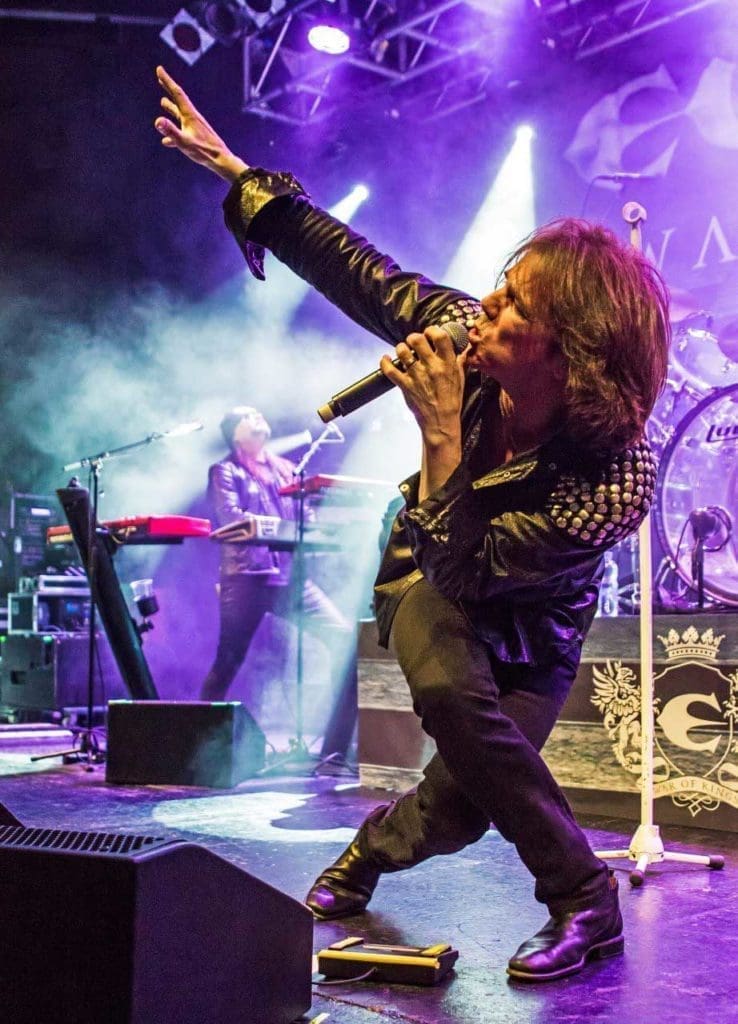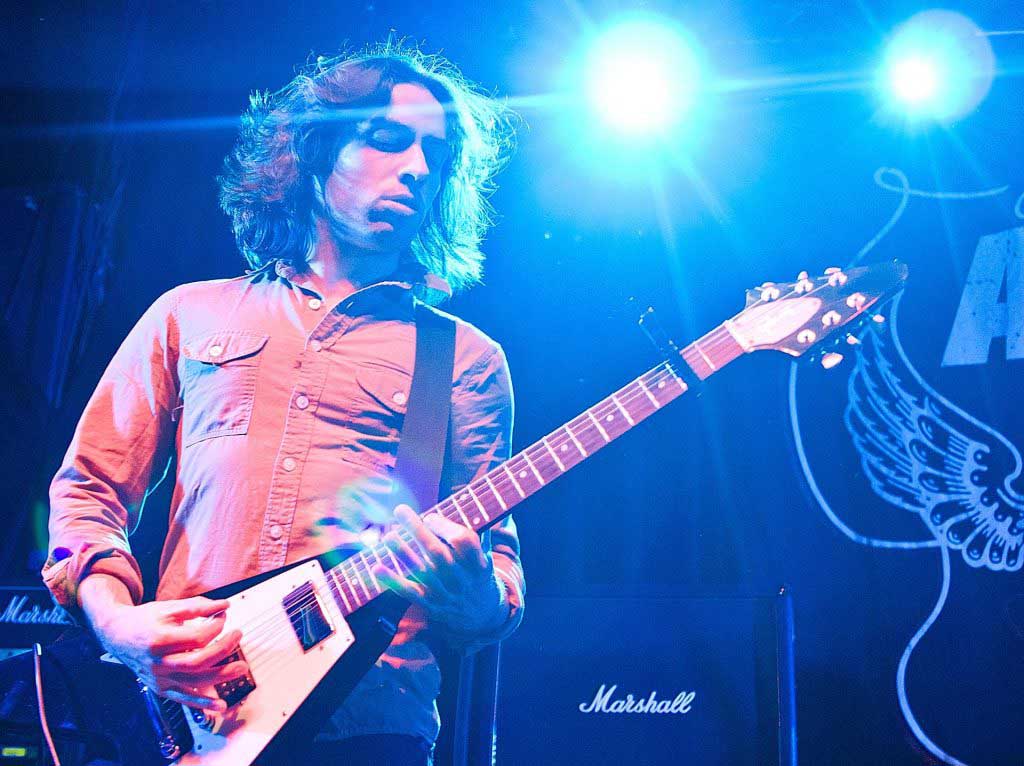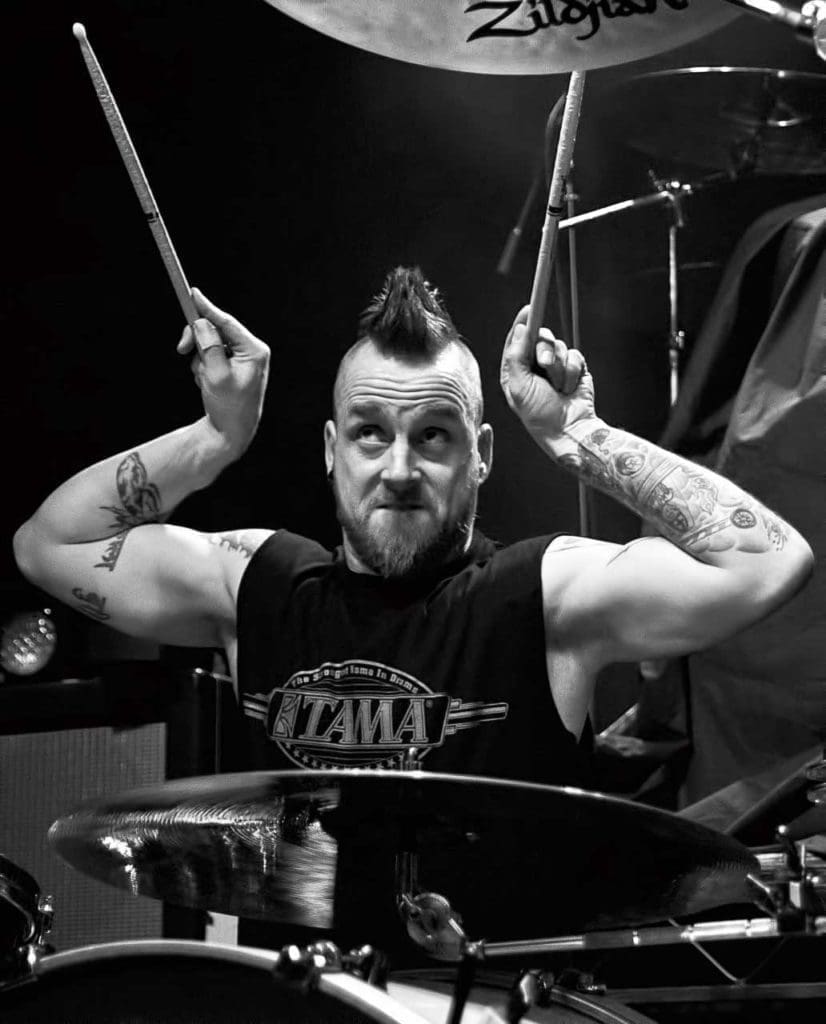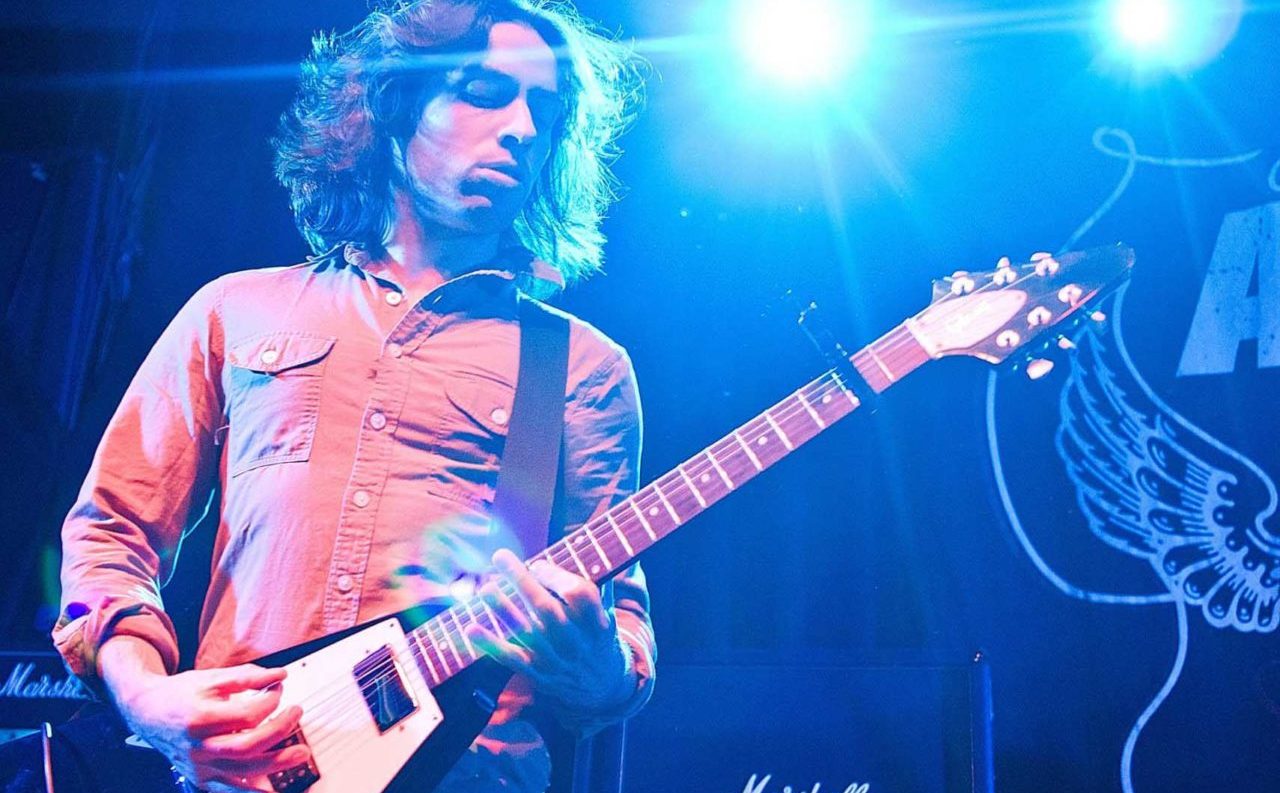From shooting your first gig through to developing your portfolio, here are some essential music photography tips and tricks to help you get started.
Getting started in music photography: Getting in
One of the trickiest parts of being a working music photographer is getting a photo pass. For larger venues (500-2000+ capacity) the space and time available in the photographer’s pit is strictly limited. With access for only the first 3 songs (less in some cases) and no flash allowed, photographers on assignment for magazines, newspapers and reviewers will be given top priority.
You need to have solid portfolio of images under your belt before you can approach the media for work. So how you do start?
Check out your local listings for live bands in pubs, battle of bands, open mic nights etc. And shoot as much you can. It’s all great experience and you learn how to deal with poor lighting and tiny stages crammed with musicians and masses of equipment.
Smaller music venues, such as clubs, will often allow you to take your camera in. However it is always best to contact the venue before the gig in case there are any restrictions in place, or message the band directly through social media.
Getting started in music photography: Essential kit
After your camera and lenses, the most important pieces of kit you can carry are earplugs. It’s by no means less rock’n’roll; wearing earplugs will save your hearing when stacks of amps are blasting while you’re pressed against the stage.
Foam earplugs work well and you can also buy dedicated earplugs for loud environments. They cut out the high frequency noise without making the music sound muddled. Some venues will not let you shoot if you are not wearing earplugs and although some do provide them, it’s always best to take your own.
SEE MORE: 25 portrait photography tips for stunning pictures of people

Getting started in music photography: Clothing
It is the photographer’s job to be as unobtrusive as possible to the band and the audience. Wearing black or dark colours will help you blend into the darkness of the venue when moving around, and not cause a distraction. Dark colours also stop the bright stage lights reflecting off your clothes and the colour leaking into the other photographers’ images.
Getting started in music photography: Do your homework
Whether you’ve seen the band more times than you can count or it’s the first time, check out the band’s latest release that will usually be promoted during the tour.
Getting familiar with the tempo and key changes in the material will make it easier to predict what the performers will do next, such as a blistering guitar solo or belting out long notes during a chorus and you can get in position before it happens.
Search for photos and videos from previous shows of the tour, take note of how the lights and stage are set up and watch how the musicians perform on stage. Is there a particular move or facial expression during a certain part of the music, how do they interact with each other and the crowd?
Also take note of how the singer stands, most will tend to hold the mic with a certain hand which will affect your shots depending on which side you shoot from, and also take note to how they use hand gestures and if they sing with hair covering their face.
While hair can be useful for some great creative effects, getting a clean image of the singer’s face is essential for publications, so it’s good practice to start nailing these shots as soon as possible.
SEE MORE: Best camera settings for window-light portraits

Getting started in music photography: Get there early
Find out what the stage times are for all the bands, and get to the venue allowing enough time for queues, bag searches etc. If you have a photo pass, make sure you have written confirmation and take a print out or have the email ready on your phone should there be any issues on the door. For bigger gigs it is a good idea have a contact number for someone with the band, who can give extra help.
Getting started in music photography: Shoot the Support bands
Photographing the support band will get your photography muscles warmed up for the main act. In addition to helping you figure out where the best angles are without any obstructions like pillars, and mic stands, you will also be able to judge where the lighting is most effective.
Be aware that support bands do not always have the best lighting compared to the main band – although I have shot gigs where it has been the other way round and most of my shots were unusable for main band!
As many professional photographers only shoot the main act sometimes you will be the only photographer shooting the support band, meaning you will have images that no else has.
This is a great way to start building relationships with upcoming bands and building your own portfolio of work as they (hopefully) go on to play with bigger names and headline shows themselves.
Getting started in music photography: Drummers
With often non-existent lighting and surrounded by a fortress of cymbals and stands, the drummer is the most difficult musician to shoot. However, drummers can give the most rewarding action shots with gurning faces, flying sweat and hair and flailing limbs.
Watch to see when they do particular rhythms or fills and make interesting faces or try slowing the shutter speed to capture the movement of the sticks. If you can’t get a clean shot, try to frame the drummer by using their drum kit in the composition.
SEE MORE: 6 photography composition techniques for more creative images

Getting started in music photography: Don’t get mauled by the frontman’s guitar…
As well as watching what the band and crowd are doing, you need to keep an eye out for crowd surfers if it’s a rowdy gig. Although there is usually security staff in place, one crowd surfer to the back of your head could spell disaster, or worse, damage your gear.
I was shooting at a sold out Therapy? show alongside 10 other photographers and 5 security staff in a very busy pit. The crowd was riled up from the first chord and front man Andy Cairns leapt off stage narrowly missing my camera, and me with the headstock of his guitar… always insure your equipment!
Getting started in music photography: Get online and get the Big Guns
Set up somewhere online where your photos can be seen, such a blog or Flickr page, It’s also great to document who you have been shooting and can help back up your skills when you start to go after more work. A dedicated Twitter or Facebook page makes it easy to share your images with the bands directly, just make sure a watermark is clearly seen on anything you share online.
Once you have a solid range of strong images, select the best 8-10 and create a small sized PDF portfolio that can be sent to local newspapers with review sections, gig review sites such, or image libraries. Having the weight of press accreditation behind you will make it easier to get photo passes. Depending on whom you work for, passes will be organized for you.
Otherwise for larger bands you will need to contact the management, the press company or even the booking agency to get a photo pass. These details can usually be found on the bands’ official website or Facebook pages. Contacts from press and booking agencies are good to keep note of as they work with large numbers of clients, and can save you time in the future if you know someone to contact directly.
All images by Shona Cutt
READ MORE
8 night photography tips you’ll use forever
5 quick fixes to improve long exposures



